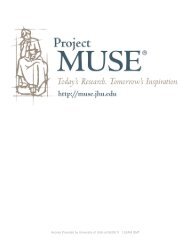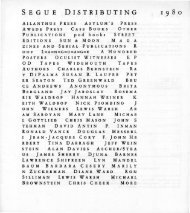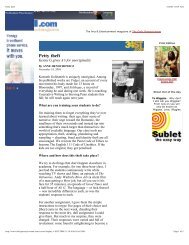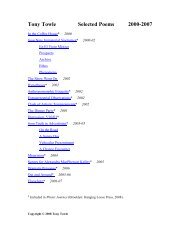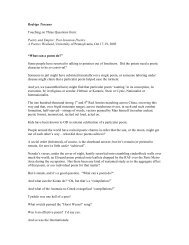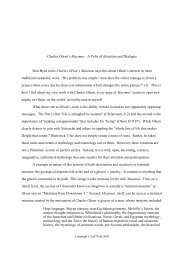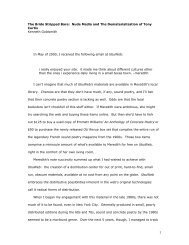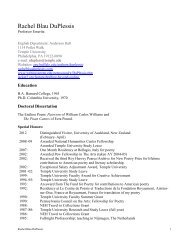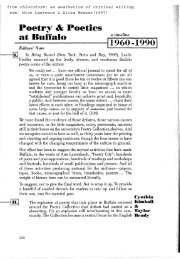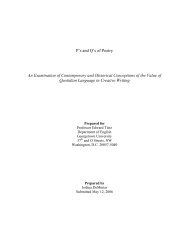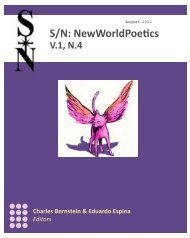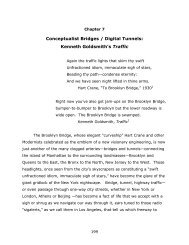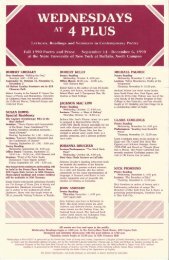Preface - Electronic Poetry Center
Preface - Electronic Poetry Center
Preface - Electronic Poetry Center
You also want an ePaper? Increase the reach of your titles
YUMPU automatically turns print PDFs into web optimized ePapers that Google loves.
From: Larry Price<br />
Subject: Anachronism<br />
… I’d like to offer a reading of "anachronism." Actually, my take would be that<br />
the ANACHRONE is about as likely as the ANAMORPH (not at all). But I<br />
take my clue by returning to the morph, margin/center. Although I’ll avoid the<br />
hedge implicit in the term "problematic," the fact is that in 9 out of 10 times the<br />
term "center" is used, it probably doesn’t exist. However, this only means that<br />
the "margin" "center" differentially signifies must have a far more complex<br />
relation to group formation than a simple geometric model would allow. And<br />
it’s that fact of the possibility of brownian motion in there that I think needs to<br />
be addressed, as well as the converse aggregate narratives (only one among<br />
them being that of the center) that work as the ideological.<br />
In fact with regard to time (baldly) or history (pathetically) there seems every<br />
bit as much tendency to "vibrate." However, there is also another morph, one<br />
which places language (in any generation) explicitly within the problem. That<br />
is, I’ve thought a great deal about Ed Foster’s introduction of Whitman into the<br />
discussion of, amongst so much else, parts and wholes, as he wrote, "discrete<br />
letters." It occurs that the issue revolves around the diacritical character of the<br />
medium. That and the fact that in the body (or at least in the experience of it)<br />
there is a zone (or at least the illusion of one) that does NOT experience the<br />
problem of open/closed form, a zone for which experience is analogical.<br />
Although the base activity may be digital (this is, of course, borne out by cases<br />
of neural dysfunction: those whose neural bridges cannot be closed (one form<br />
of schizophrenia) vs. those whose neural bridges cannot be opened (causing<br />
severe depression)), the curious twist comes because of the rheostat<br />
phenomenon in most of the experiences in the total sensorium; that is, Emotion<br />
A is not premeasured in its track from 1 to 10, but seems to traverse a<br />
continuum. It may be the simple complication by other emotions, thoughts,<br />
sheer digs from the body/far-flung reaches of the sensorium. Who knows? That<br />
fact is that it has implications concerning language, which, of course, is<br />
diacritical throughout. I’ll set aside the opposition speech/language and say the<br />
divide seems to come between the diacritical system of language and the bodily<br />
generation and/or experience of and/or within that diacritical system. The<br />
collision between (or chafing within) the digital necessity of a system and the<br />
body’s analogical (fact of or) yearning for integration within itself and/or other.<br />
Which is how I then read Ed’s use of Whitman vis-a-vis phonemics and syntax.



